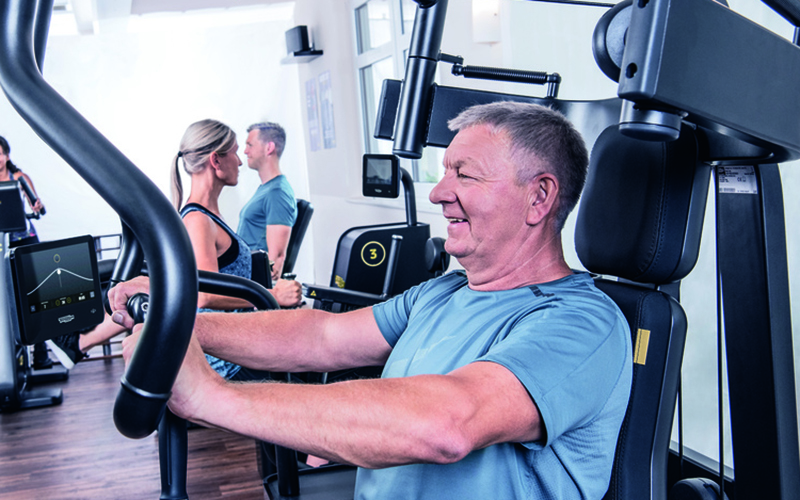
Did you know that one of the best ways to ensure we age gracefully and stay healthy is through strength training? Strength training, also known as resistance training, involves exercises that improve your muscle strength, and comes with many health benefits. It can help prevent chronic diseases, increase longevity of life, and promote healthy aging.
Chronic disease doesn’t just affect your health, it’s also expensive. Each year, our nation spends about $4.5 trillion on annual healthcare costs, and 90% of that is for people with chronic disease and mental health conditions. The good news is that strength training can help prevent the following conditions:
- Heart Disease: More than 934,500 Americans die of heart disease or stroke every year—that’s more than 1 in 4 deaths. Strength training improves heart health by reducing body fat, lowering blood pressure, and improving cholesterol levels.
- Diabetes: More than 38 million Americans have diabetes, and another 98 million adults in the United States have prediabetes, which puts them at risk for type 2 diabetes. Strength training helps control blood sugar levels. When you build muscle, your body uses blood sugar more effectively, which reduces the risk of diabetes.
- Arthritis: Arthritis affects 53.2 million adults in the United States, which is about 1 in 5 adults. It is a leading cause of work disability in the United States, one of the most common chronic conditions, and a leading cause of chronic pain. Strong muscles support your joints, reducing the pain and stiffness associated with arthritis.
In addition to chronic disease prevention, strength training can also increase longevity of life. Studies show that people who engage in regular strength training tend to live longer. Adding at least two days of strength training to 2.5 hours of weekly aerobic exercise has been shown to lower the risk of death by 30% over an 8-year period. This highlights how strength training can improve overall body function and reduce the risk of falls and fractures.
Finally, strength training promotes healthy aging by helping to maintain muscle mass and bone density, which naturally decline with age. There are specific recommendations and guidelines for both muscle mass and strength, based on age and gender, that our providers can help you determine. By staying strong, we can maintain our independence and quality of life, as well as boost our metabolism, help control weight, and improve energy levels.
Making Strength Training Simple with Lifestyle365
We understand that starting a new exercise routine can be daunting, but the Lifestyle365 program can help! Our program is designed to make strength training simple and easy to stick with:
- Structured Plans: We provide easy-to-follow plans that fit into your schedule, whether you’re a beginner or more advanced.
- Guided Workouts: Our guided workouts show you exactly what to do, reducing the risk of injury and making sure you get the most out of each session.
- Supportive Community: Join a community of like-minded individuals who encourage and support each other.
Strength training is a powerful tool for preventing chronic diseases, increasing longevity, and promoting healthy aging. With the Lifestyle365 program, integrating this vital practice into your life has never been easier. Let’s get strong together and pave the way for a healthier future!
How Lifestyle365 Exercise Specialists Assess and Track Your Strength
In Valley’s Lifestyle365 program, we assess muscle mass, 1RM (one-repetition maximum) strength in horizontal push/pull movements and the leg press, as well as grip strength. Here’s why these measures are important to track over time as we age:
- Muscle Mass: Tracking muscle mass helps make sure we are either maintaining or increasing our muscle tissue, which is vital for metabolism, mobility, and overall physical health. As we age, muscle mass naturally decreases, so monitoring it can help us take action if we start to lose too much.
- 1RM Strength (Horizontal Push/Pull and Leg Press): Assessing 1RM strength in these movements provides a clear picture of our maximum strength capacity. This is crucial for everyday activities like lifting objects and maintaining balance. Regularly tracking these metrics helps us understand our progress and make necessary adjustments to our training.
- Grip Strength: Grip strength is a strong indicator of overall muscle strength and function. It’s linked to activities of daily living, such as opening jars or carrying groceries. Research has shown that grip strength is also associated with overall health and longevity, making it an essential measure to monitor as we age.

